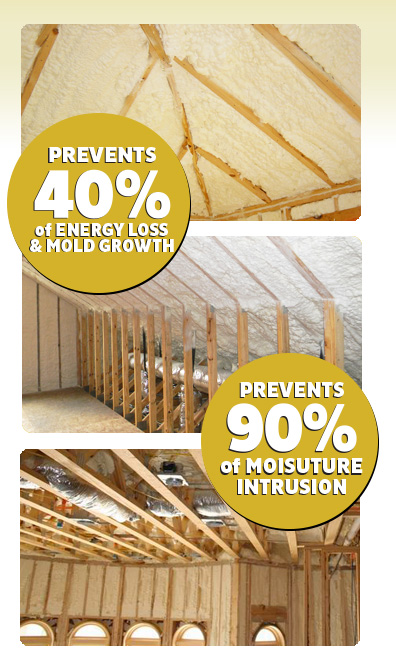| |
Thermoseal is a spray applied polyurethane foam which seals cracks, gaps and voids by expanding 120 times its volume into a semi rigid insulation and air seal.
The combination of the water blown expanding foam with the inherent adhesive property of the polyurethane plastic sets this insulation apart from the others. High air permeability of traditional insulations allows air to easily pass through walls where the gaps and seams exist. Temperature differences between the inside and outside
of buildings create convection air currents within the wall cavities. Air infiltrations and convection currents in the walls and ceiling is what reduces the thermal performance of traditional insulations.
| |
Reduces sensible and latent heat loads.
Eliminates air infiltration: preventing 90% of moisture intrusion,
40% of energy loss and mold growth.
Reduces damage from wind-driven rain.
Eliminates condensation on ducts.
Cuts utility bills substantially.
|
Use Thermoseal spray foam insulation to seal out the air infiltration and stop convection currents within the insulation for more energy efficient, healthy and
sustainable buildings.
Ventilation in southern climates can be a major cause of humidity problems. The problem of condensation in attics, especially in hot-humid climates, is caused by
humid outdoor air coming in contact with cold surfaces in the attic. Most offending cold surfaces are usually supply ducts, but can also be ceiling drywall and metallic penetrations through the ceiling if low interior set points are maintained. The attic air
dew point can be higher than the outdoor air dew point because moisture stored in the wood roof framing structures at night is released during the day. The greatest problem with attic condensation will occur during the daytime when the air conditioning system operates for long periods, causing supply ducts, supply diffusers, and ceiling areas near supply diffusers to remain cold. |



